The
Midland Air Museum
is round the back of Coventry airport, next door to the now-deceased
Electric Railway Museum, and I visited it on the same day. It has a
strong focus on Armstrong Whitworth and related companies, which had a
factory here. All photos are
cc-by-sa as usual.
As it says, a reconstruction of the control panel for the first
gas turbine engine test-run. Well, in some respects the first; Hans
von Ohain's hydrogen-fuelled early models ran two years earlier, but
needed external power.
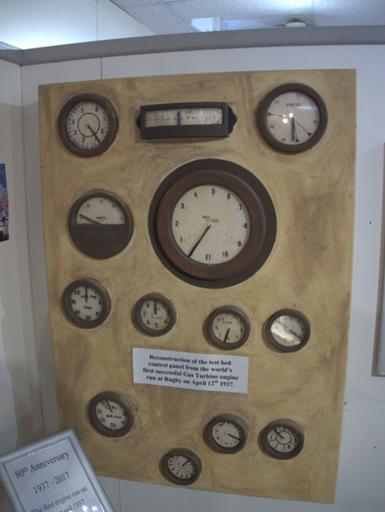
Power Jets W.2/700, as flown in the E.28/39 and early Meteors.
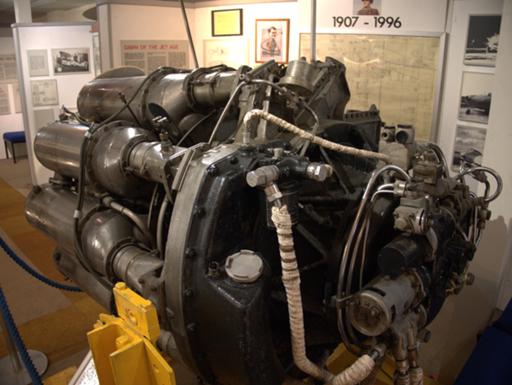
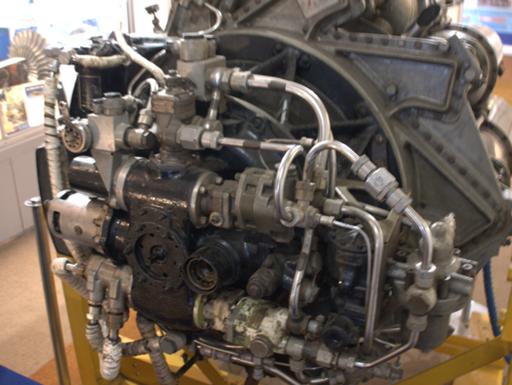
The main body of the museum was infested by vendors of aviation tat (I
don't know whether this is a regular thing), so it was hard to get
good pictures of many of the aircraft (and some had been moved out of
easy access to get more tables in). But here's a de Havilland Vampire,
one of my favourites of the early jets.
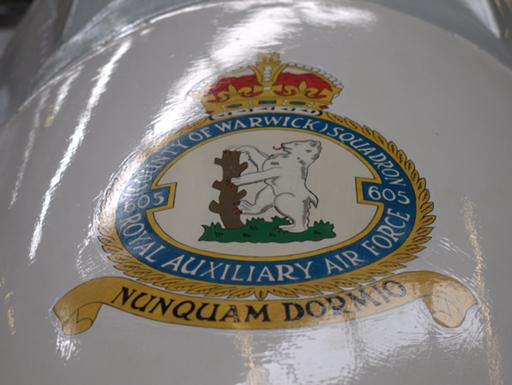
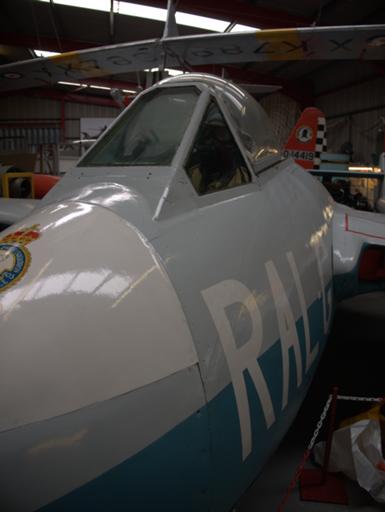
That's not a roof, that's a Vulcan through that door. Later, later.
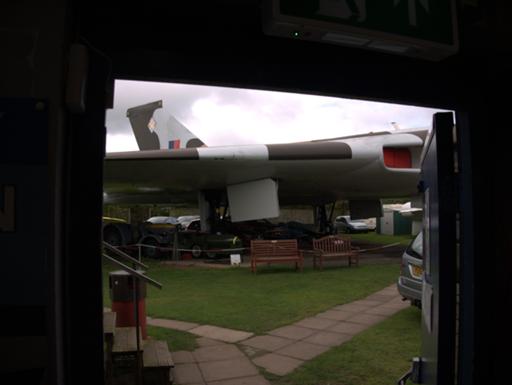
Bristol Hercules, aggressively cut away.
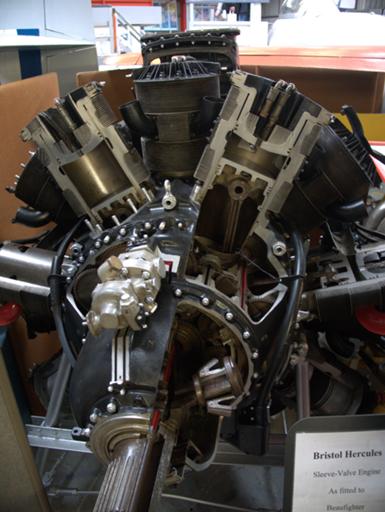
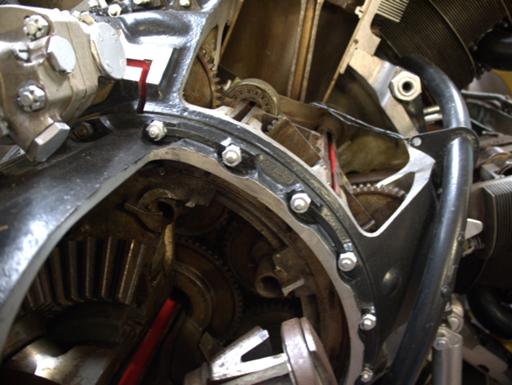
Armstrong-Siddeley Stentor engine (for Blue Steel).
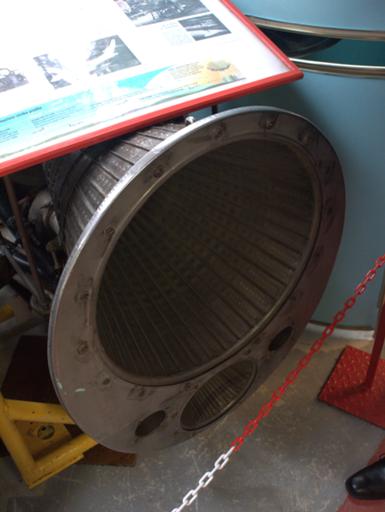
A later generation of Link trainer from the usual sort. Note circuit
boards behind the panel on the left.
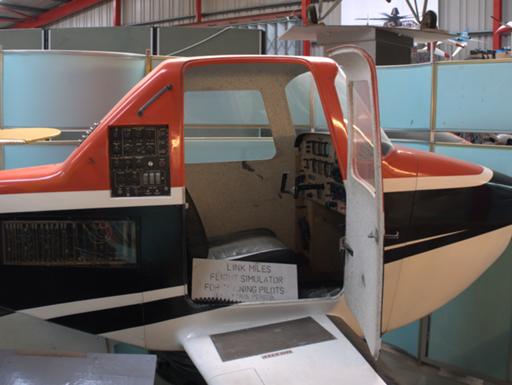
Red Top and Fireflash missiles. (The Fireflash used that
configuration, two boosters carrying the main unpowered missile body
up to speed, because of fears that ionisation in the rocket exhaust
would interfere with guidance signals. This turned out not to be the
case.)
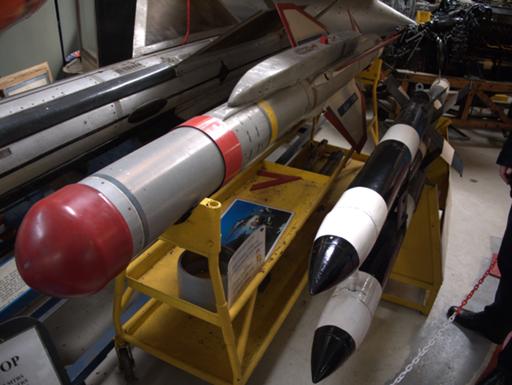
Saab 29 Tunnan (the only one I've seen outside Sweden), and its
powerplant: a de Havilland Ghost with added reheat, built under
licence as the Svenska Flygmotor RM2B.
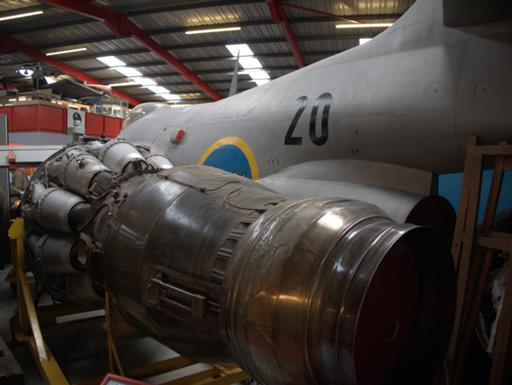
Next to it for no obvious reason, a Griffon.
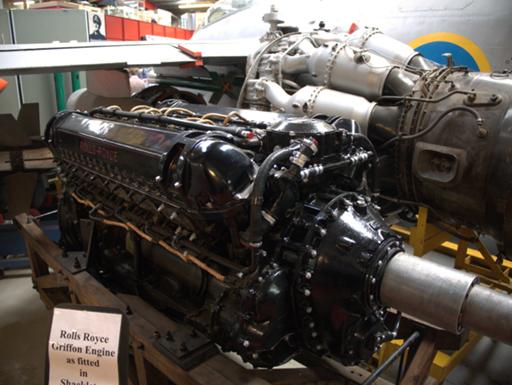
The back wall contains various aircraft models, and the case at the
end is clearly the "barking mad ideas" one - including this T.1127,
proposal for a training version of what would become the Harrier.
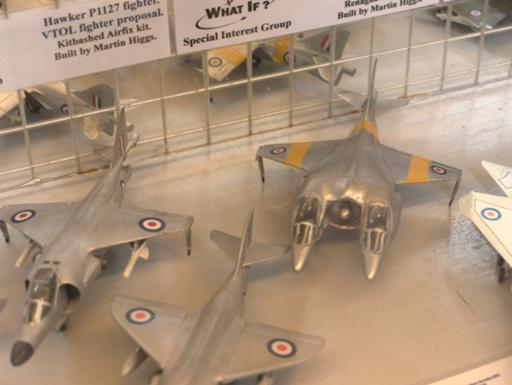
Also this VTOL fighter proposal with excessive numbers of tiny lift
engines.
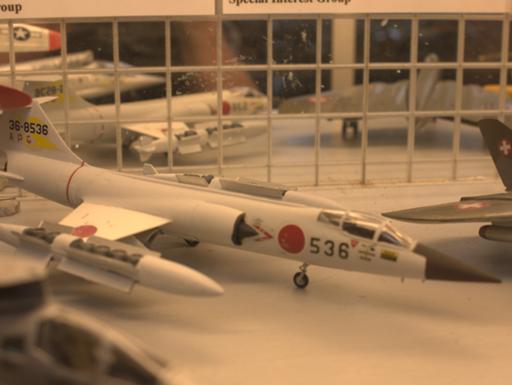
And this close-support aircraft proposal in which I at least feel I
can see some ancestry of the A-10. (It ought to have been called the
Mosquito, had there not already been a plane of that name.)
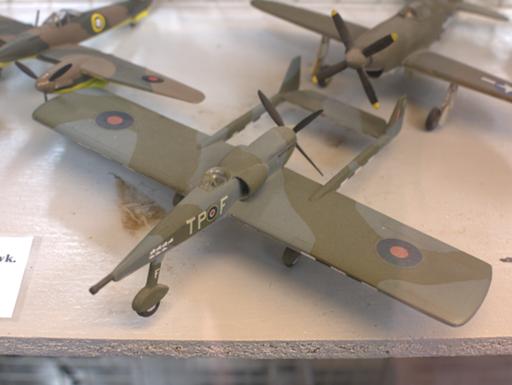
BAe P.1214 advanced STOVL concept; to the right, P.1216 ditto; behind
them, Grumman A12.
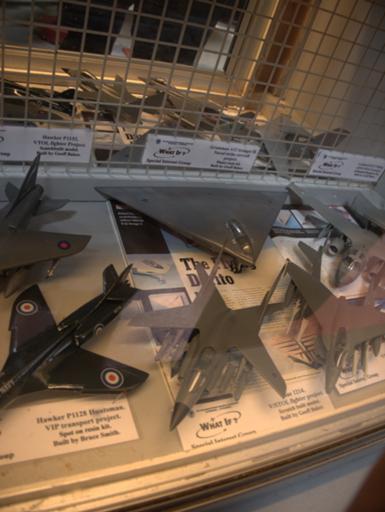
Armstrong Siddeley Single Mamba. Behind it, a Slingsby T.38 Grasshopper.
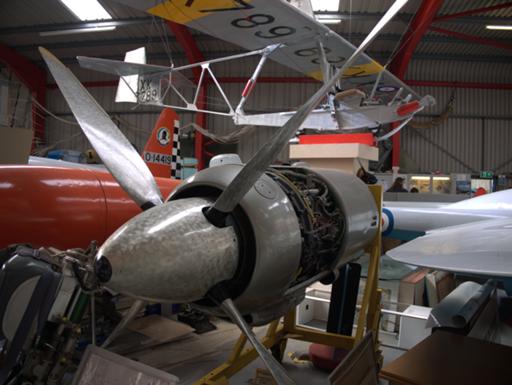
Lockheed T-33.
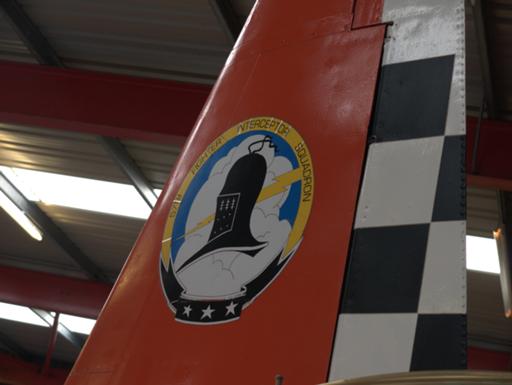
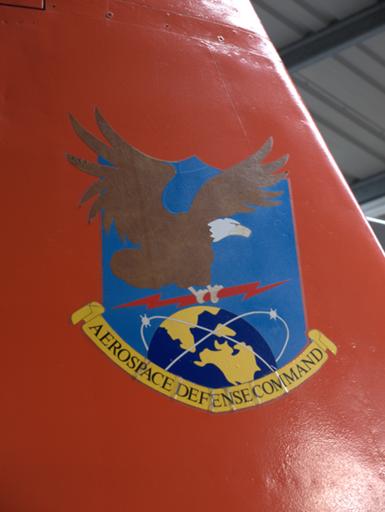
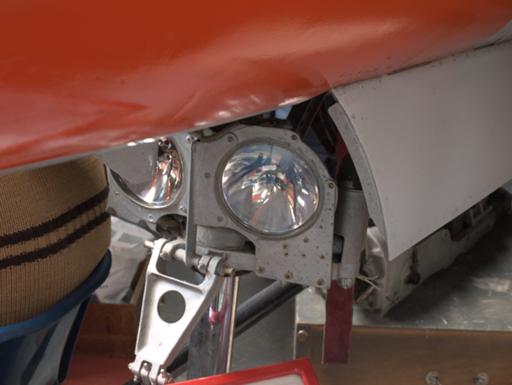
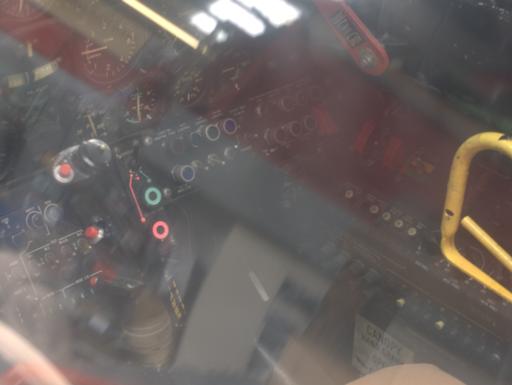
Gloster Meteor.
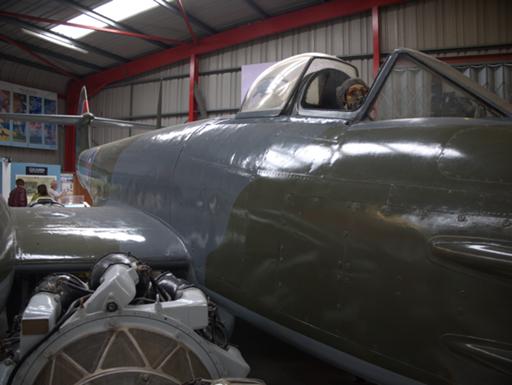
A somewhat hacked-about Canberra (nose only). Why are there
instruments down there by the pilot's feet? There's no bomb-aiming
position or anything like that. Nothing on the label to give any clues.
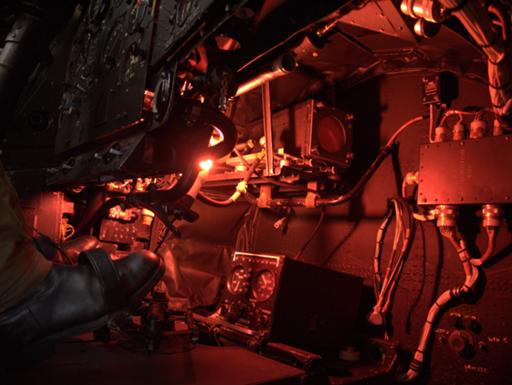
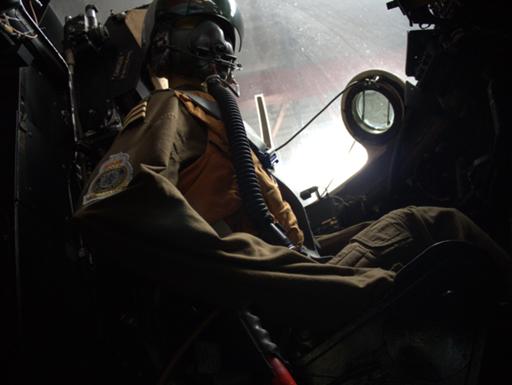
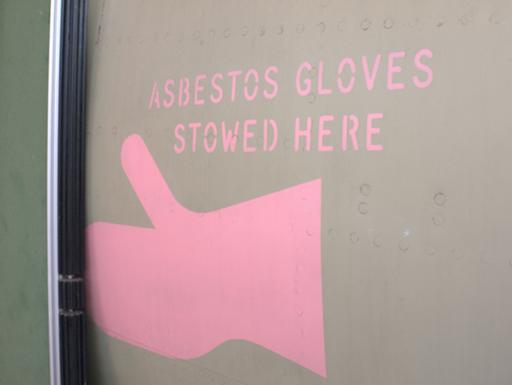
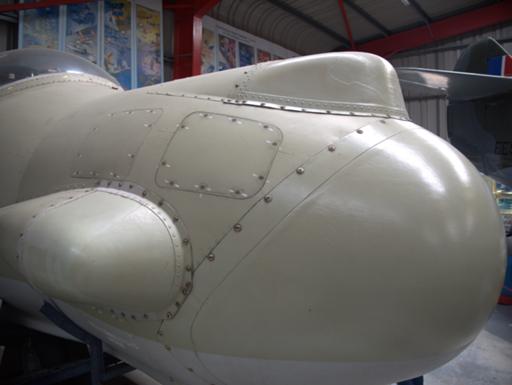
Covered and unlabelled: one of two prototypes of the Chichester-Miles
Leopard four-seat
business jet, from 1997.
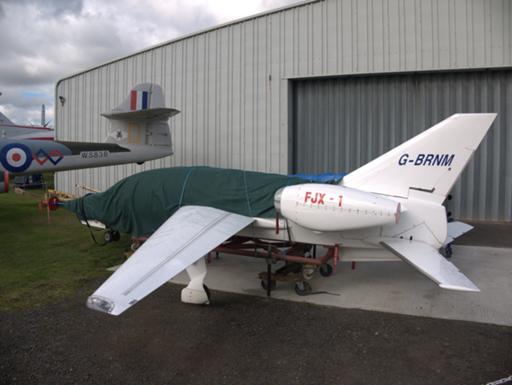
Meteor nightfighter.
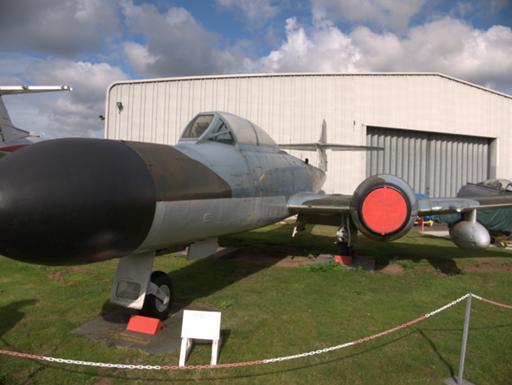
de Havilland 125 business jet, remounted for training.
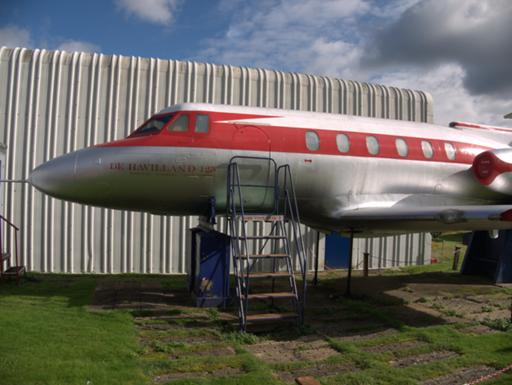
Westland Wessex.
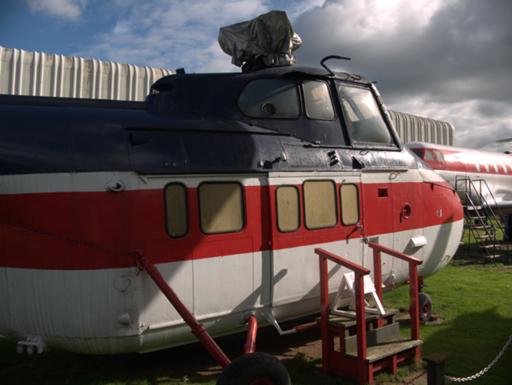
Vulcan B.2.
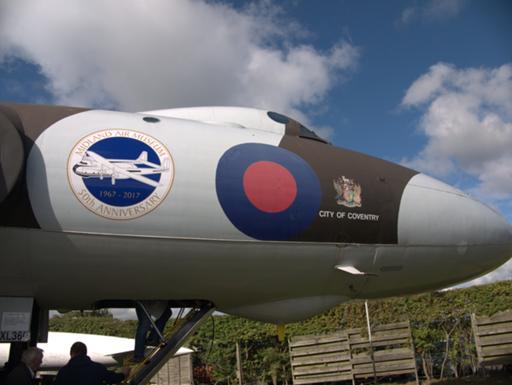
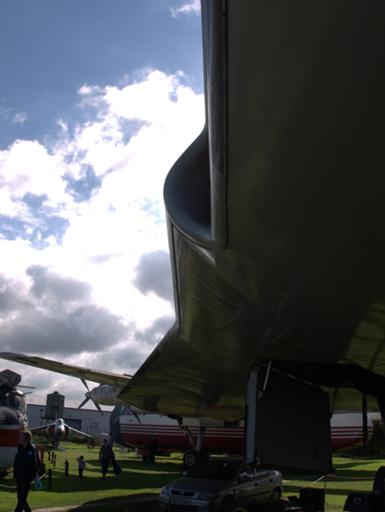
There are clean landing gear bays and there are dirty landing gear
bays…
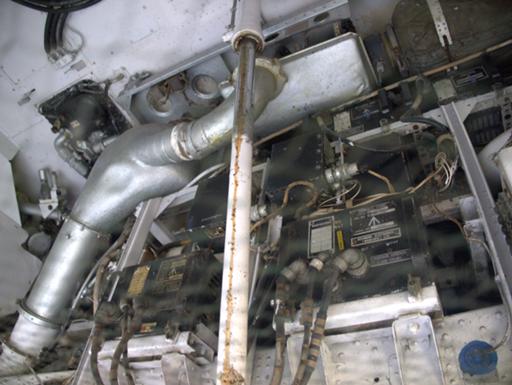
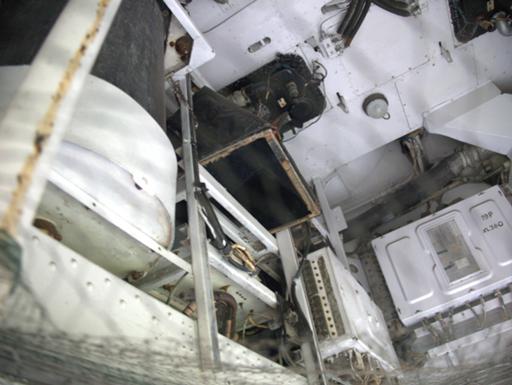
Inside the crew compartment, navigator radar's position.
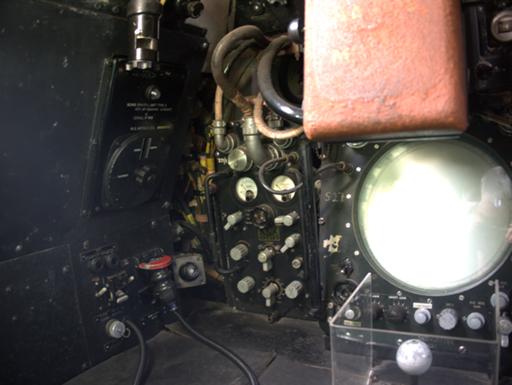
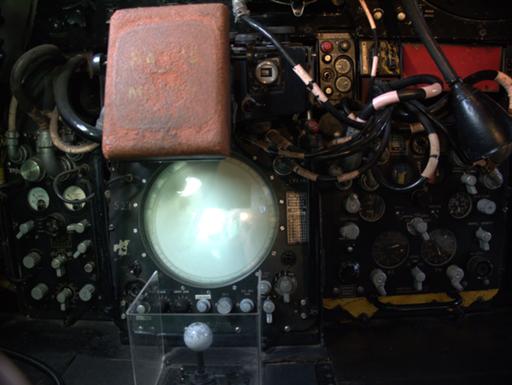
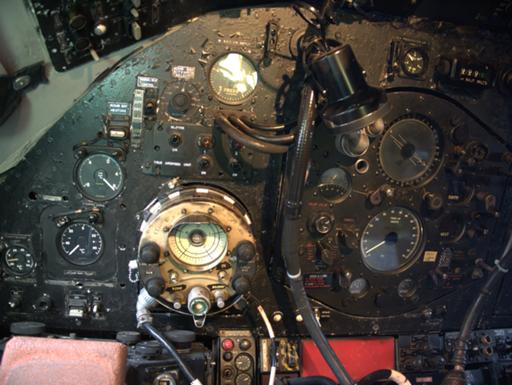
Looking across to navigator plotter and air electronics officer's
positions.
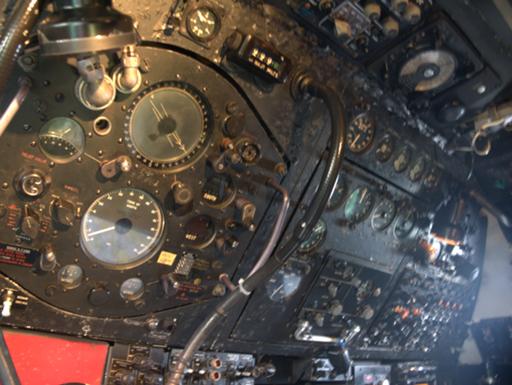
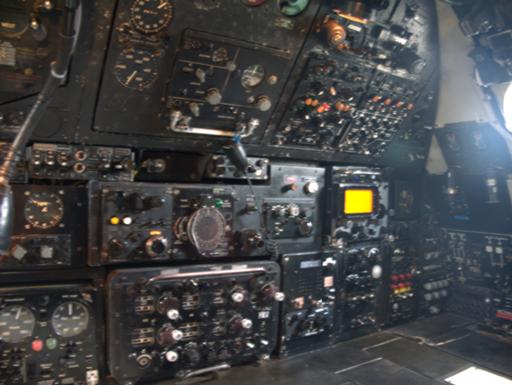
Pilot's and co-pilot's positions. No access to these, because the ram
air turbine deploying handle is purely mechanical, and still live.
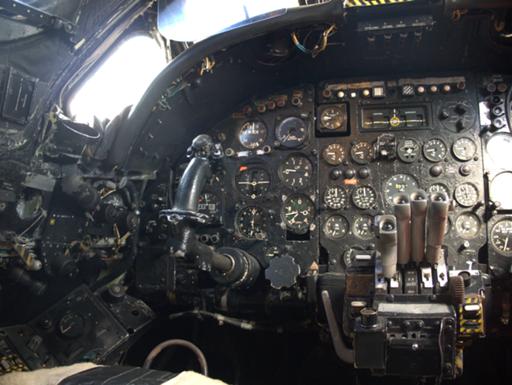
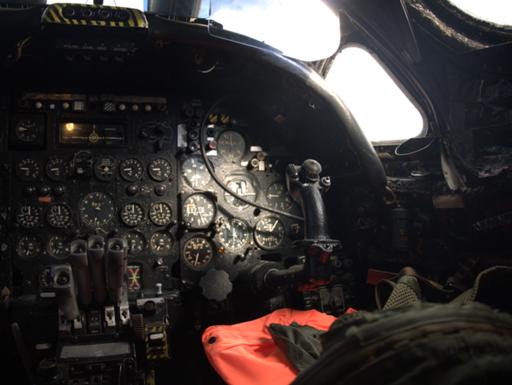
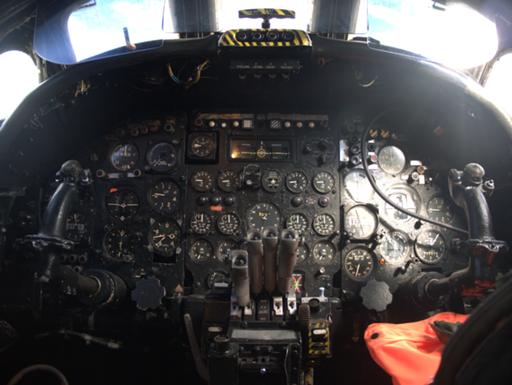
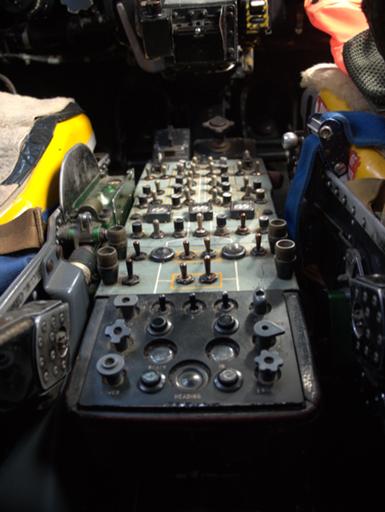
Lower in the nose, the bomb-aimer's compartment, fitted as many of
them were with a camera for assessing the accuracy of simulated
bombing runs.
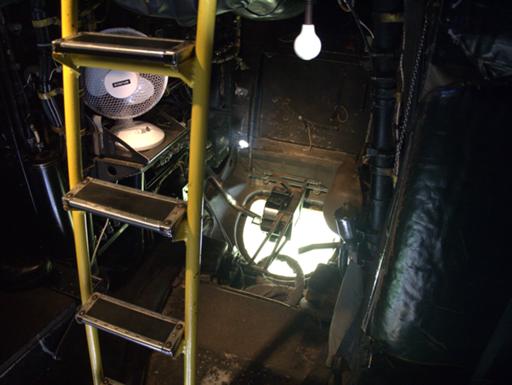
Blue Steel.
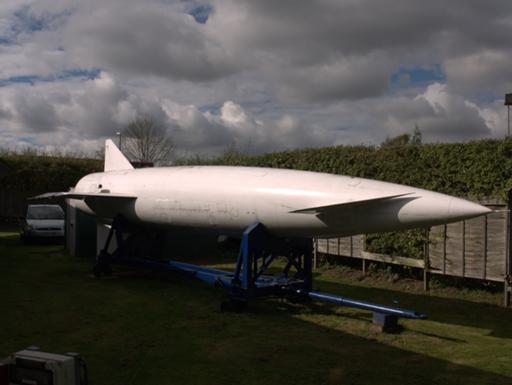
Looking up into the entrance hatchway (cockpit at right).
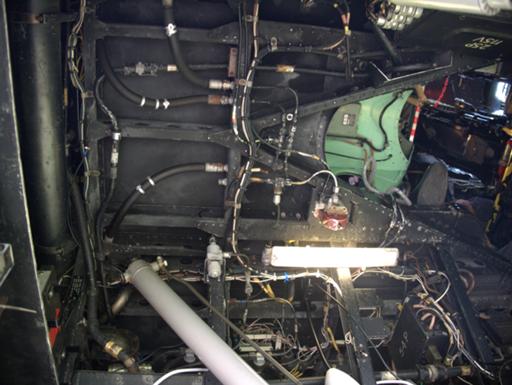
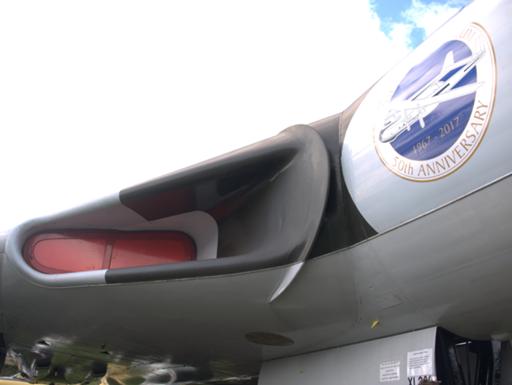
Boulton Pail P.111A, for exploring the flight characteristics of
tailless delta wing aircraft.
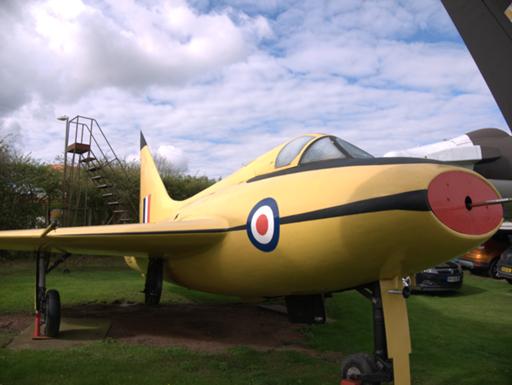
Armstrong Whitworth Argosy.
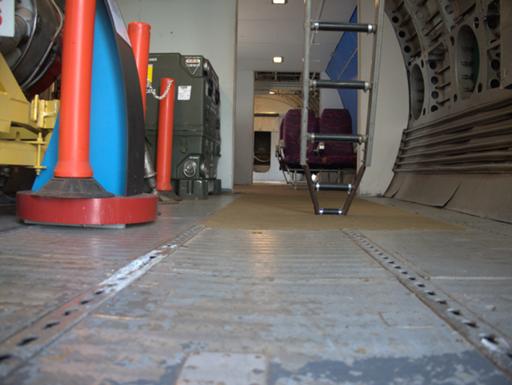
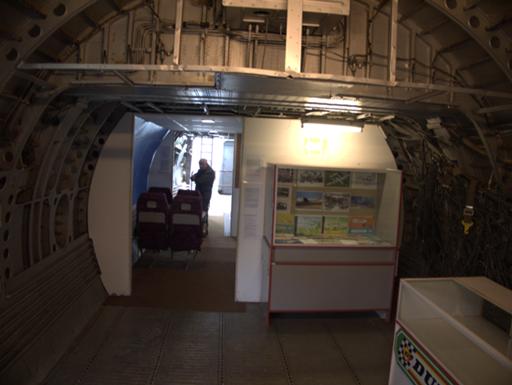
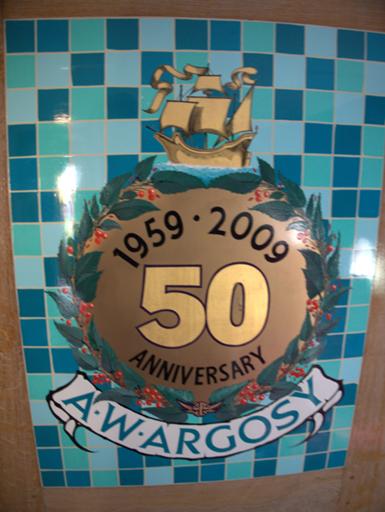
And more cockpit time, this time in the co-pilot's seat. Definitely of
the "every flat surface has a switch on it" school of aircraft design.
Note in particular complex pressurisation controls, and weather radar
clearly bodged in after the design had been mostly fixed. (Apparently
on-board power wasn't enough to run both pilot's and co-pilot's sets
at the same time.)
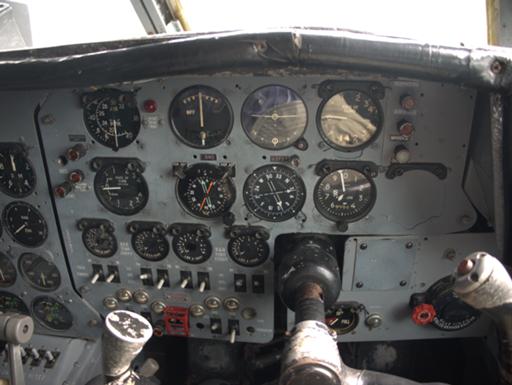
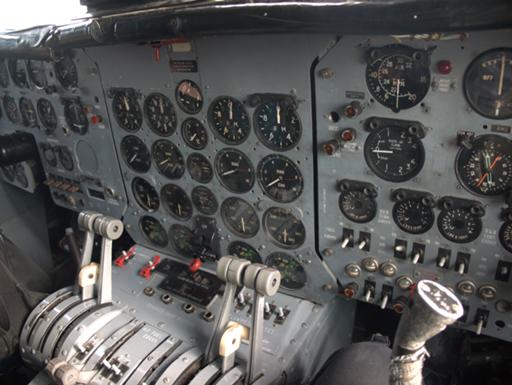
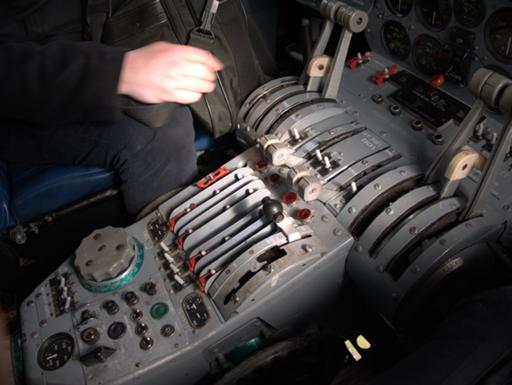
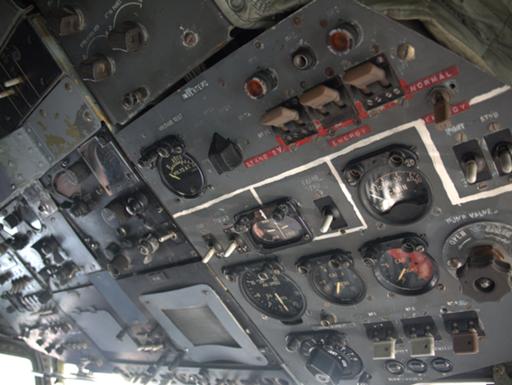
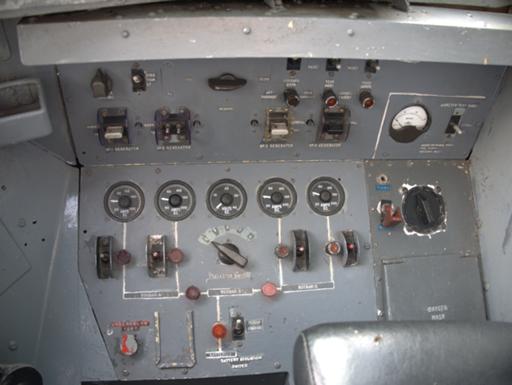
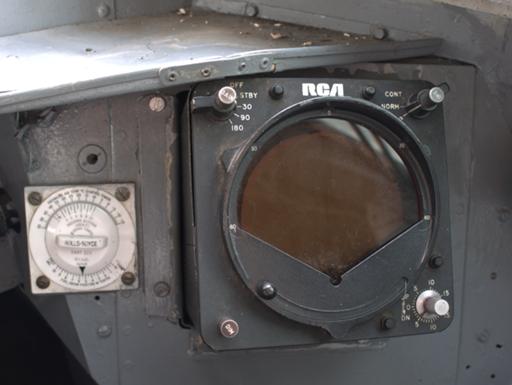
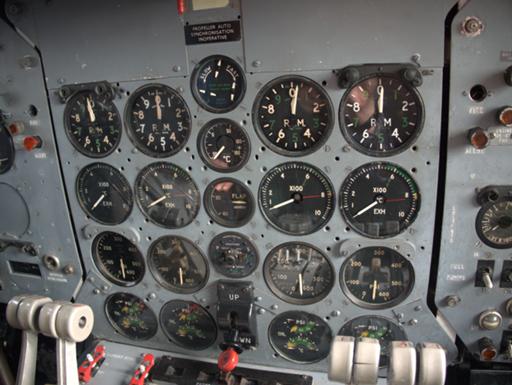
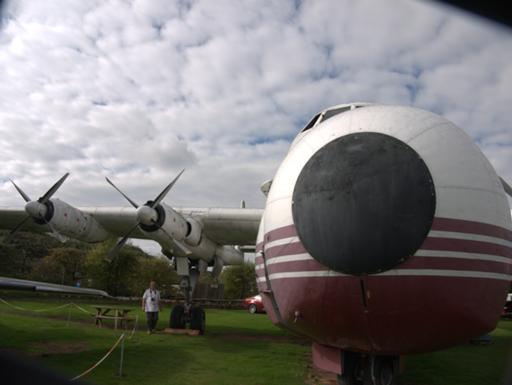
Hawker Hunter.
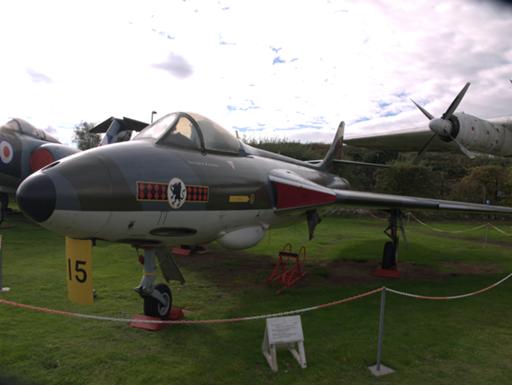
A rare Gloster Javelin.
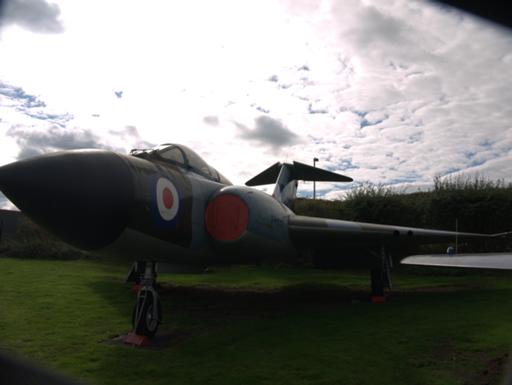
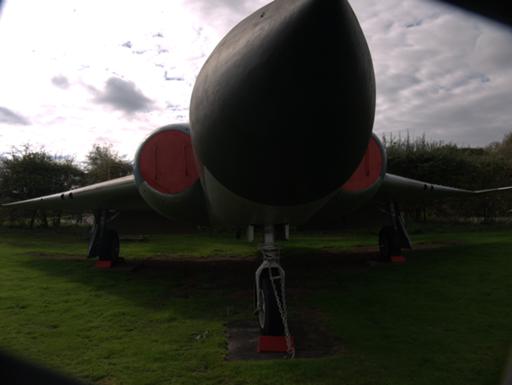
Armstrong-Whitworth Sea Hawk.
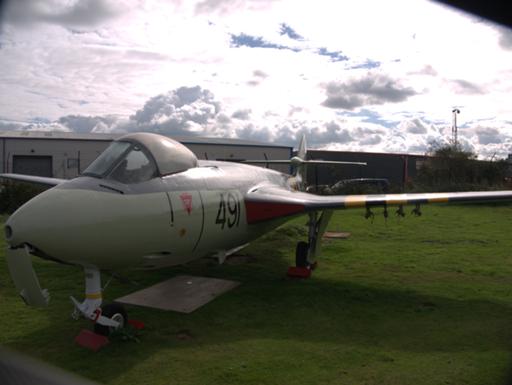
de Havilland Sea Vixen. Those overwing strakes shouldn't work
aesthetically, but they do.
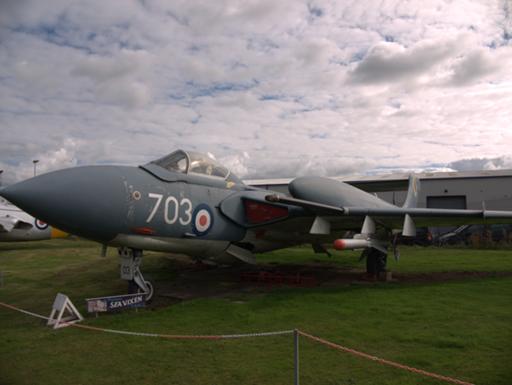
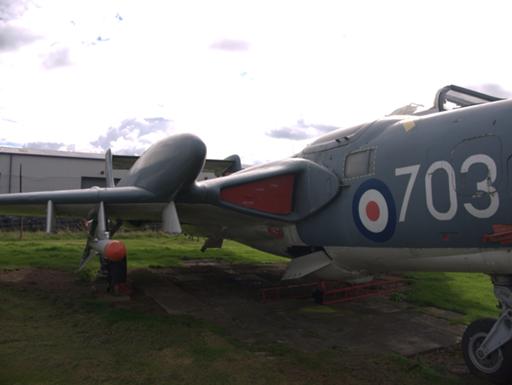
Fairey Gannet, always larger than one expects.
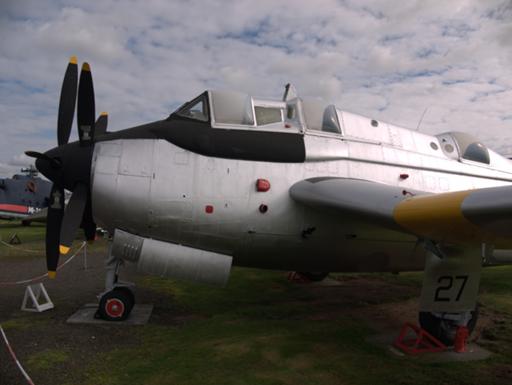
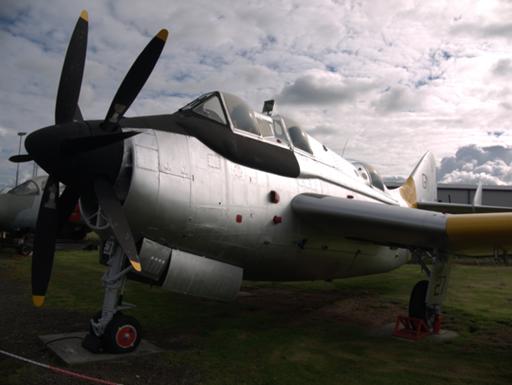
Tornado GR.4.
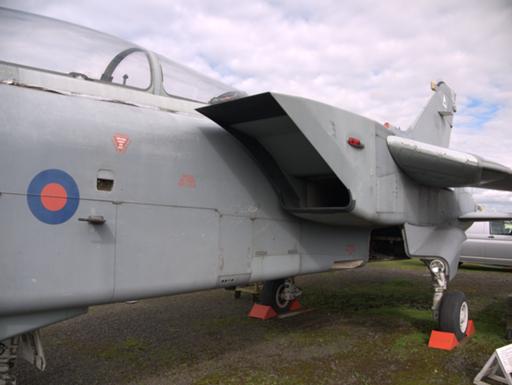
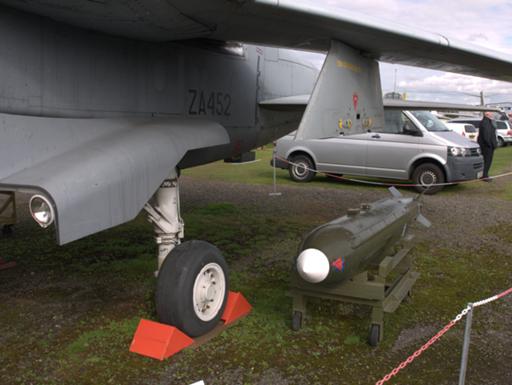
Hawker Siddeley Buccaneer S.2B (nose only).
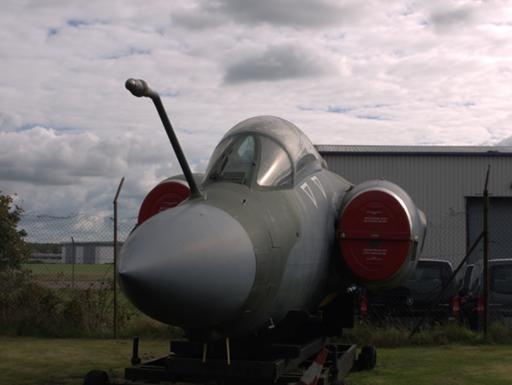
Lockheed Starfighter.
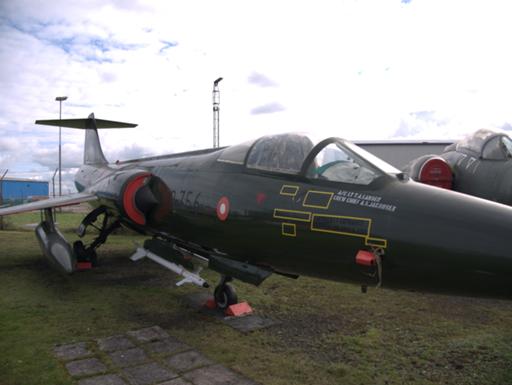
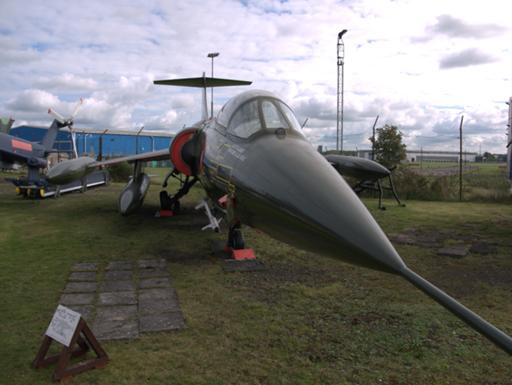
Mi-24 Hind.
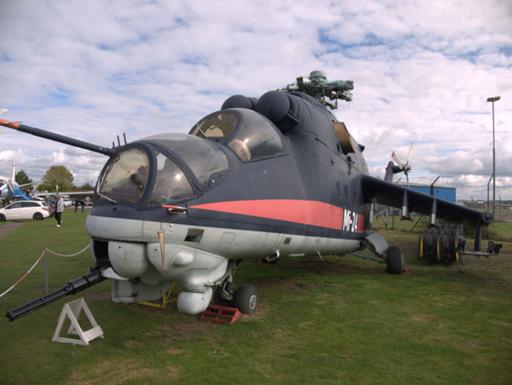
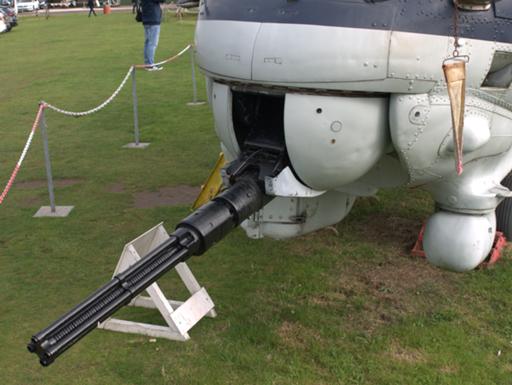
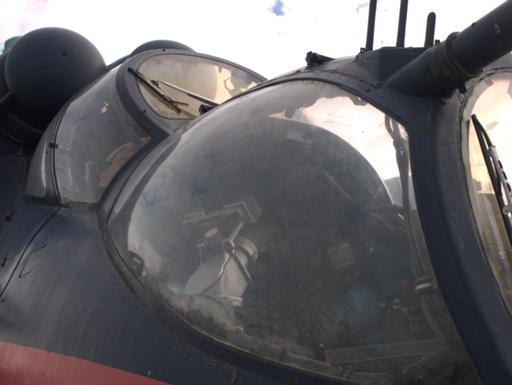
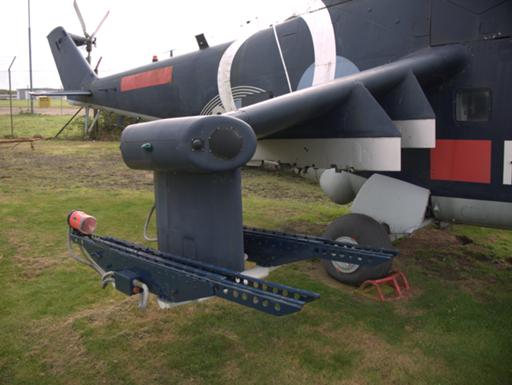
MiG-21SPS, from the East German Air Force.
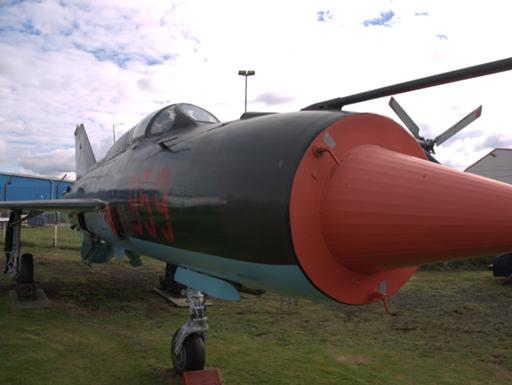
North American F-86A Sabre.
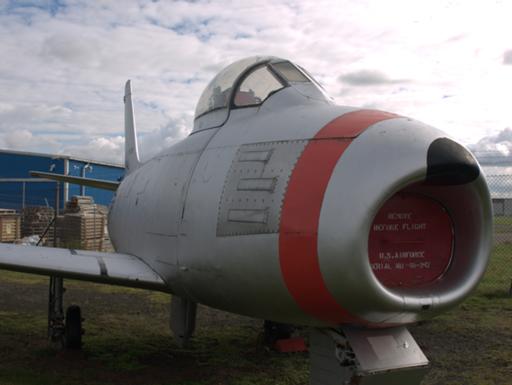
Phantom, of course.
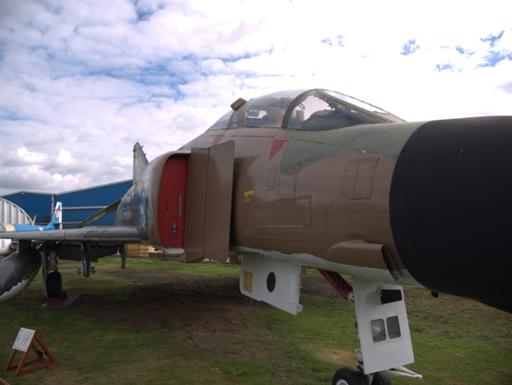
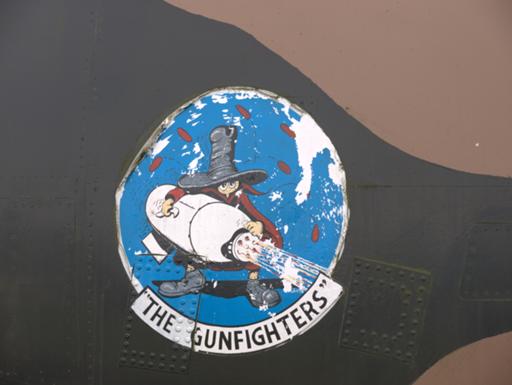
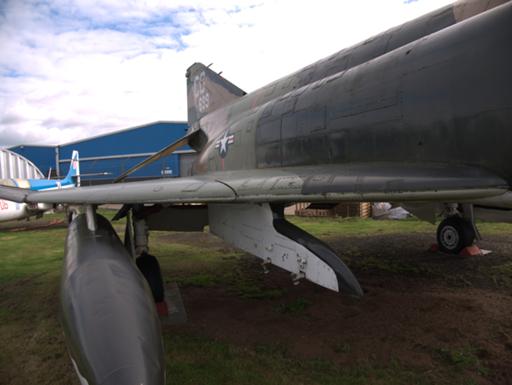
Polish TS-11 Iskra jet trainer.
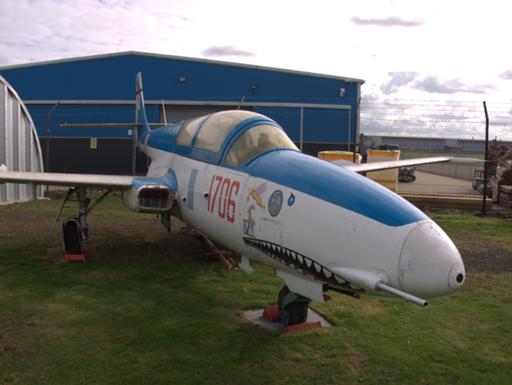
Handley-Page Victor (nose section only, that one that looks as if it's
out of Flash Gordon).
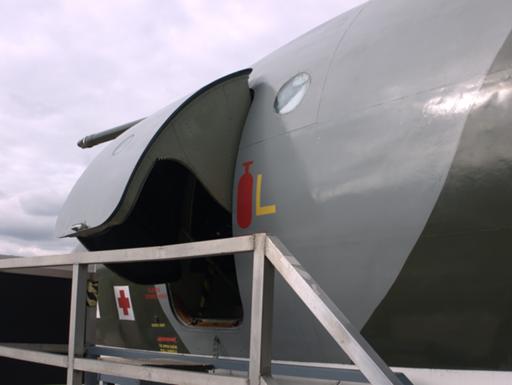
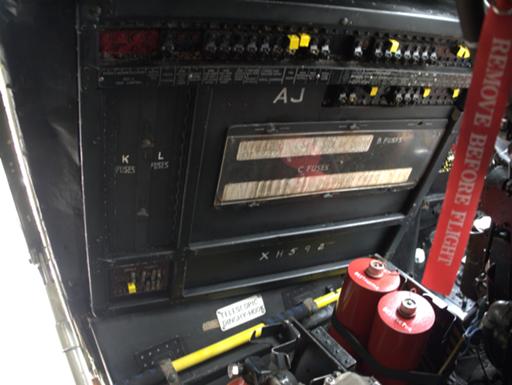
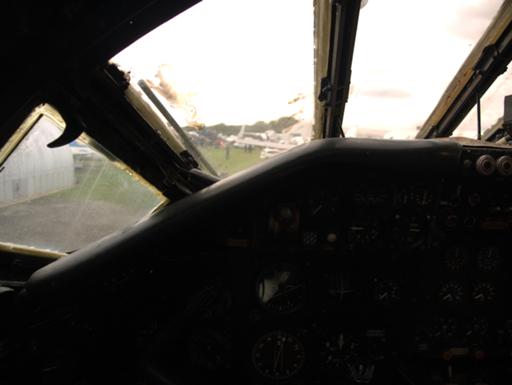
Pilot's position. Not for the nervous fiddler-with-things.
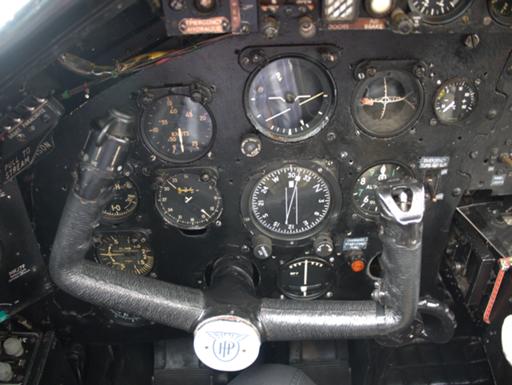
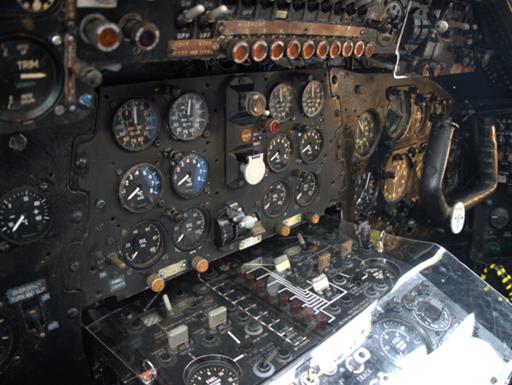
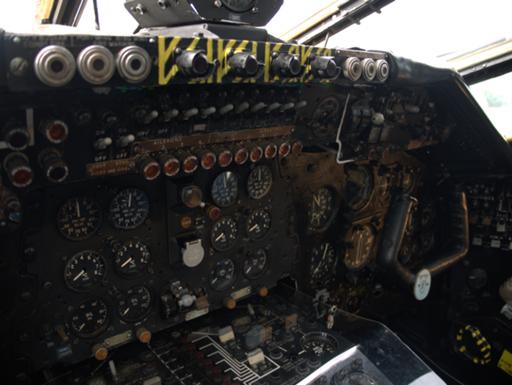
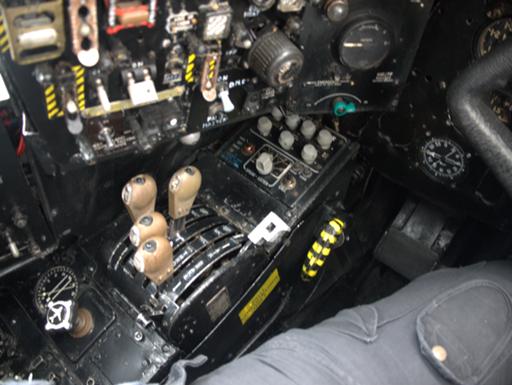
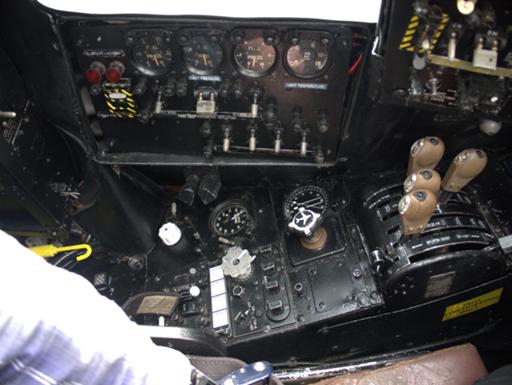
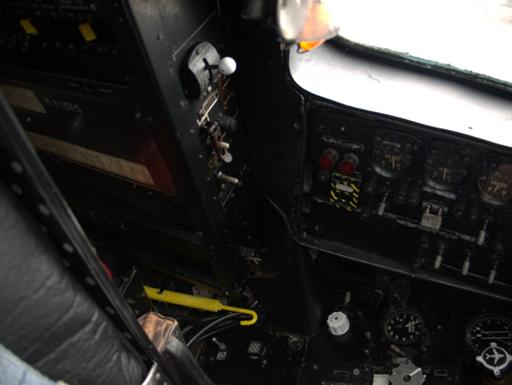
Down onto the bomb-aimer's padded floor.
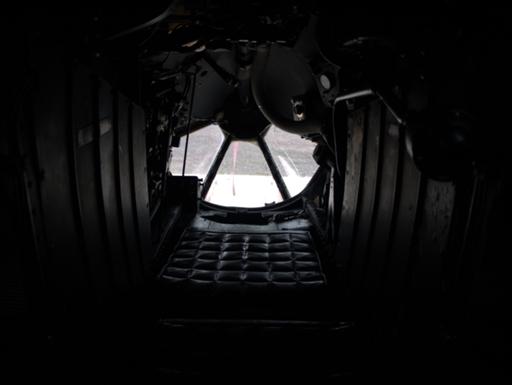
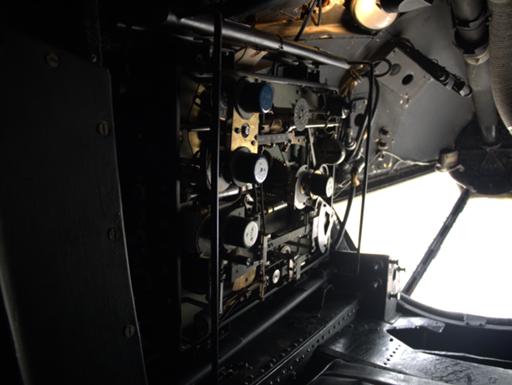
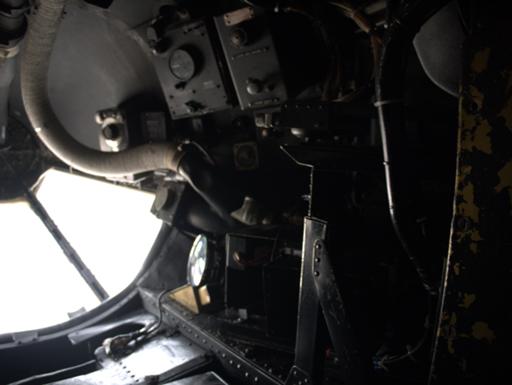
"…even more than most of the things in here."
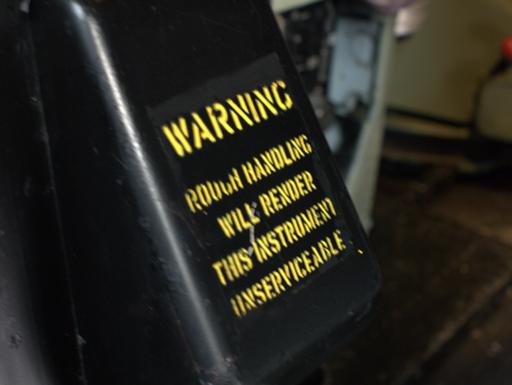
Rear part of the crew compartment, again with navigator radar,
navigator plotter and air electronics officer.
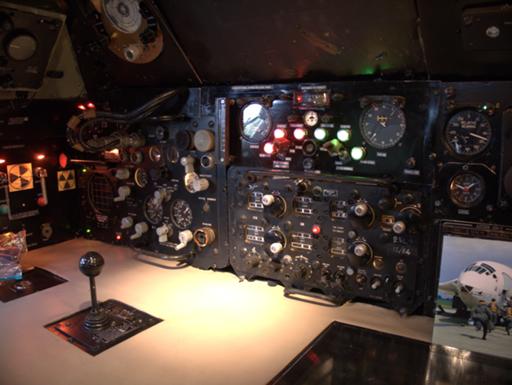
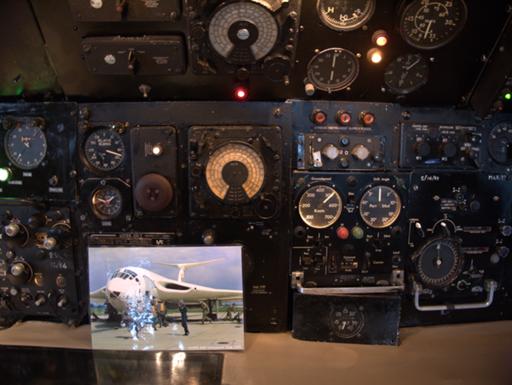
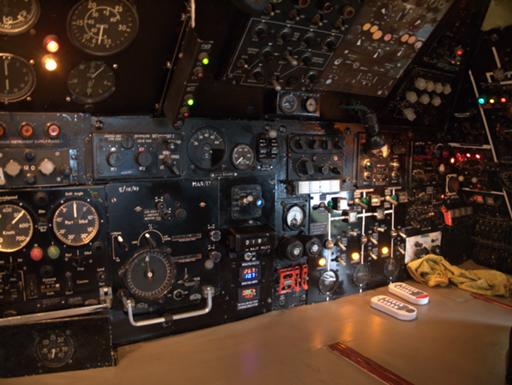
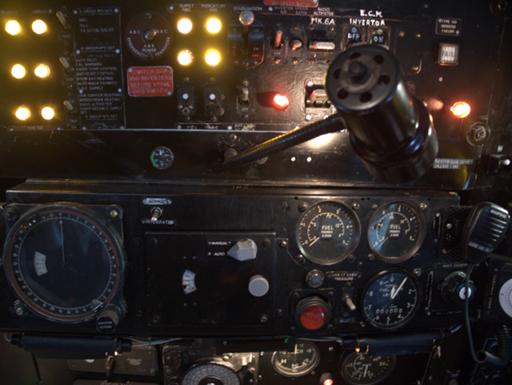
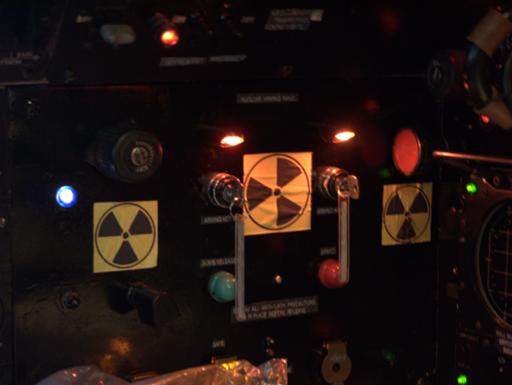
Ex-Finnish Air Force Folland Gnat.
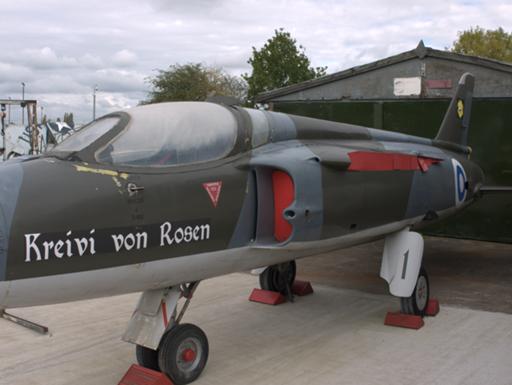
de Havilland Dove.
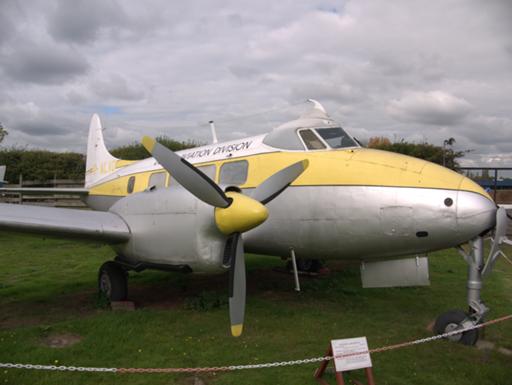
Percival Prentice.
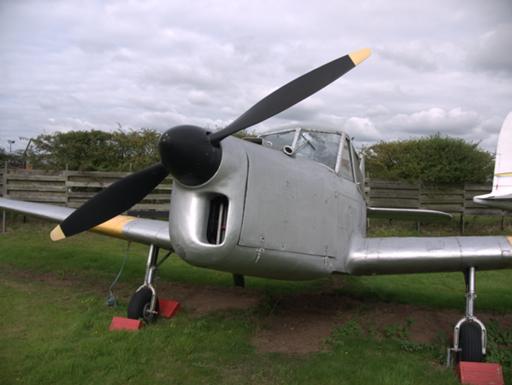
Another Lockheed T-33 Shooting Star. (Ex French Air Force, so why
that rondel has a green centre…)
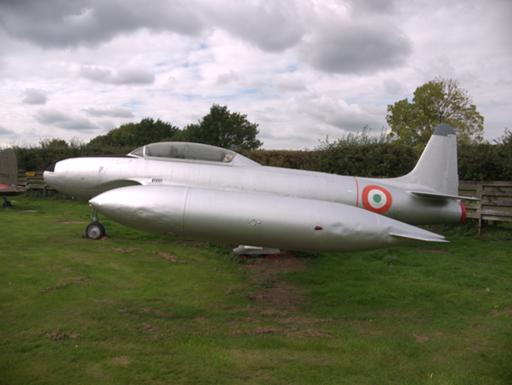
F-100D Super Sabre.
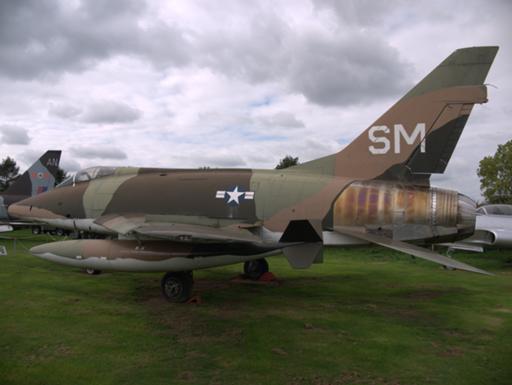
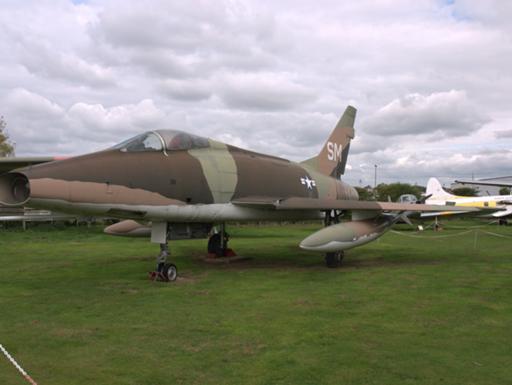
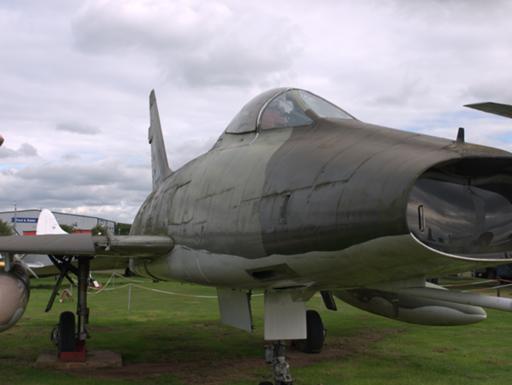
F-101B Voodoo.
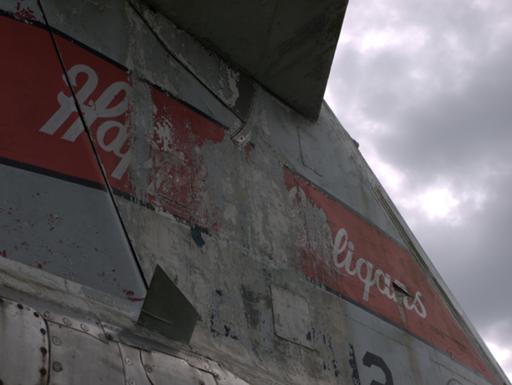
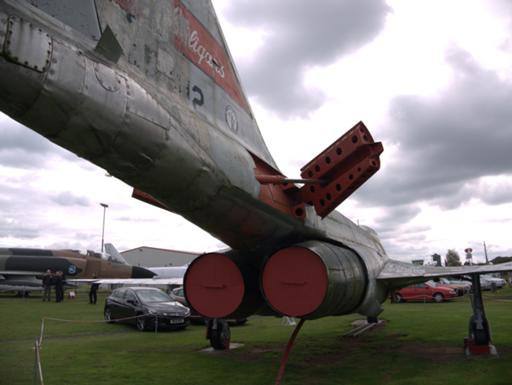
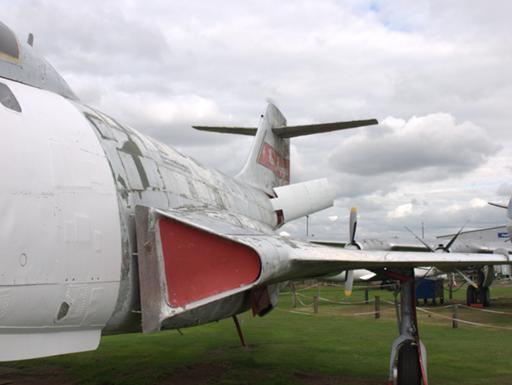
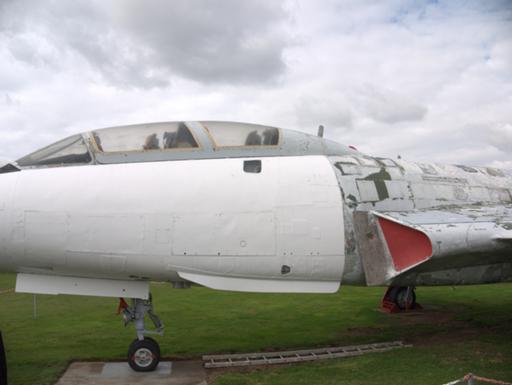
Another unknown and unlabelled.
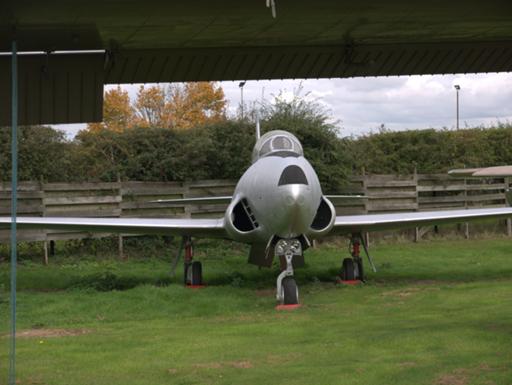
de Havilland Canada Beaver.
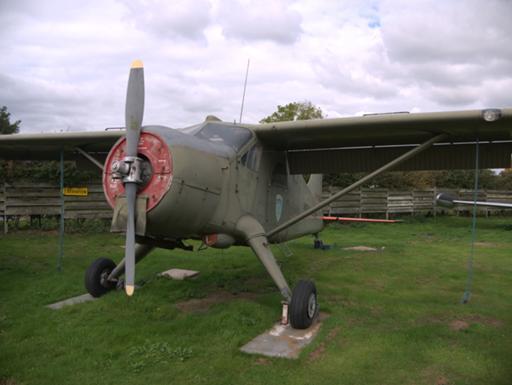
Lightning. Someone designed that access ladder.
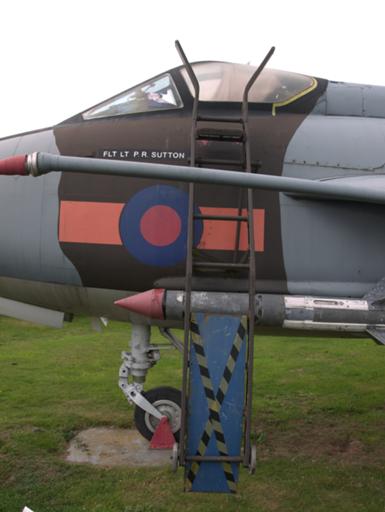
Dassault Mystere IVA.
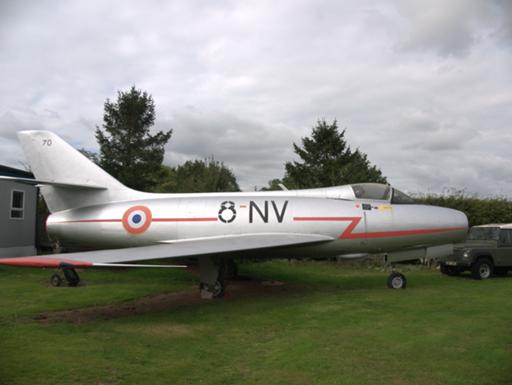
Canberra. No, not quite that old.
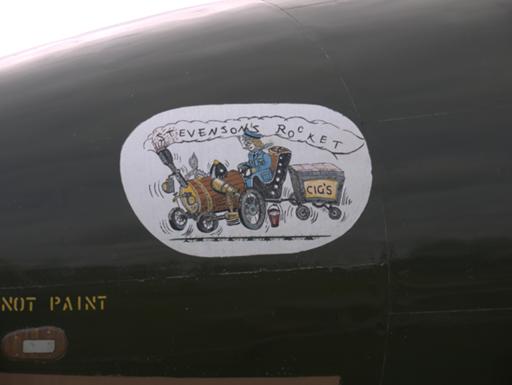
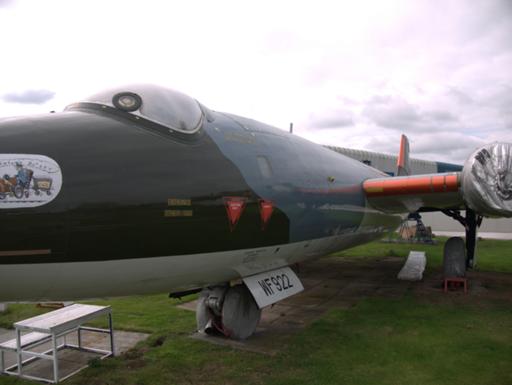
Ex-Saudi Lightning.
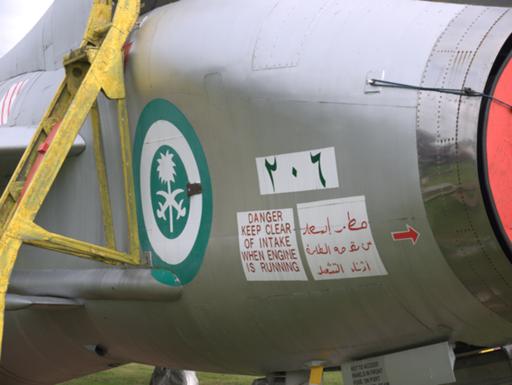
Viper engine.
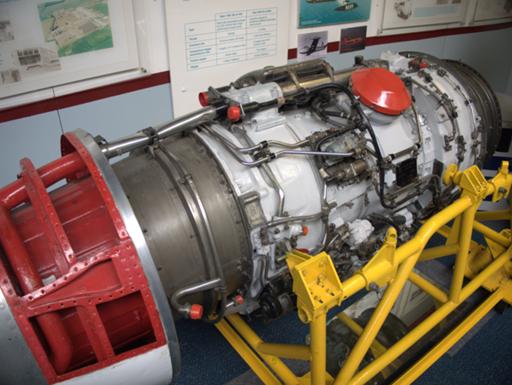
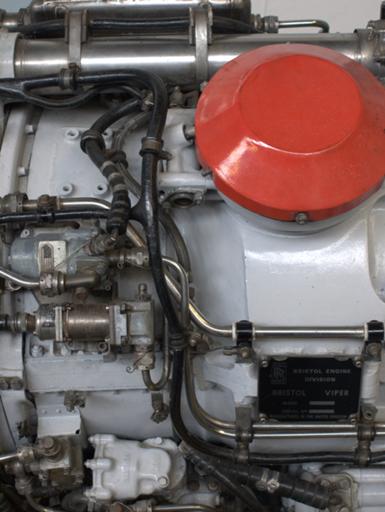
Alvis Leonides.
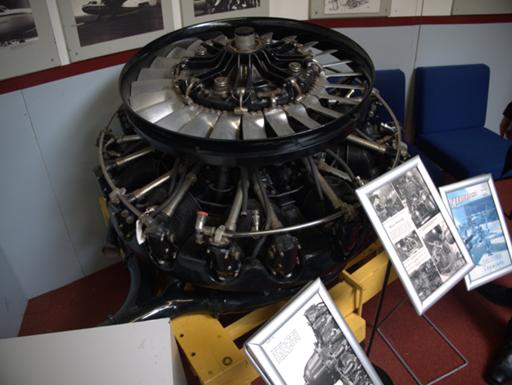
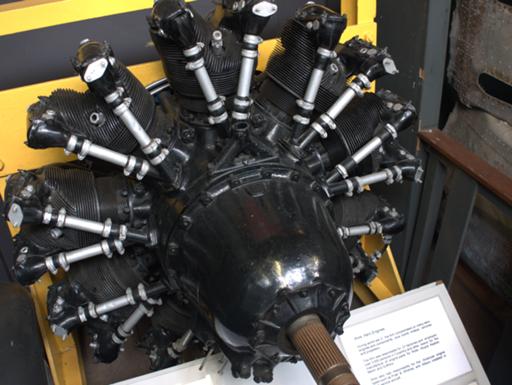
Armstrong Siddeley Sapphire.
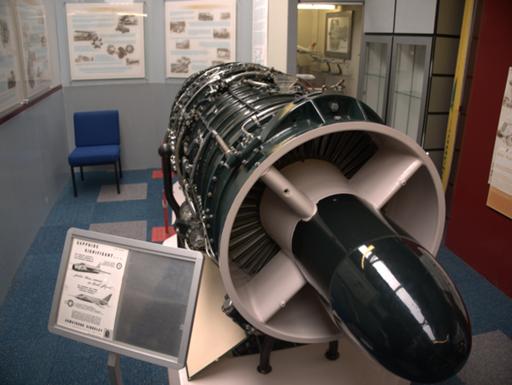
Bristol Siddeley BS605 JATO rocket engine.
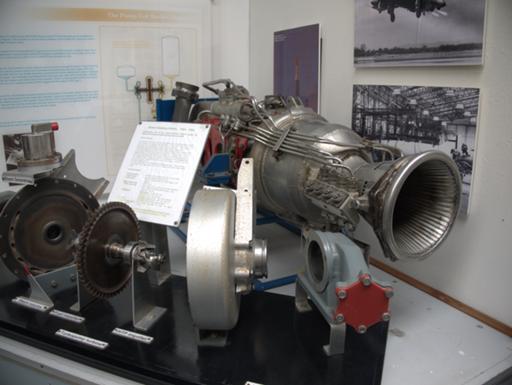
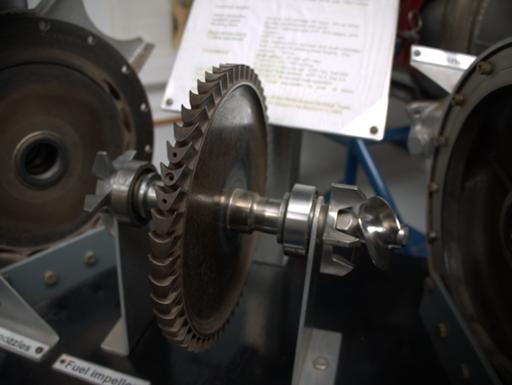
Unlabelled mechanical bomb-aiming computer.
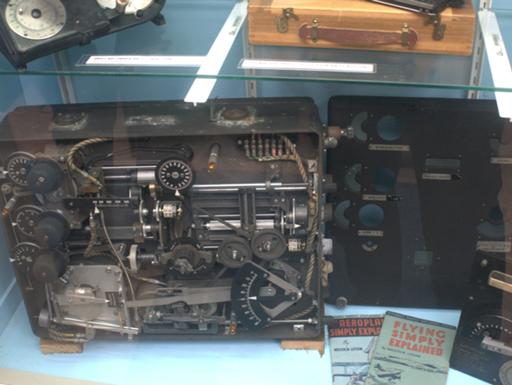
Here's an obscure one: the Armstrong Whitworth
Pyramid
re-entry vehicle proposal from 1958.
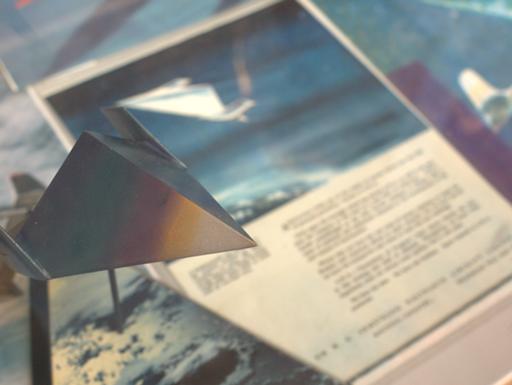
Possibly the worst plan I've seen for a STOL transport: horizontal
air intakes to the lift engines (Medways).
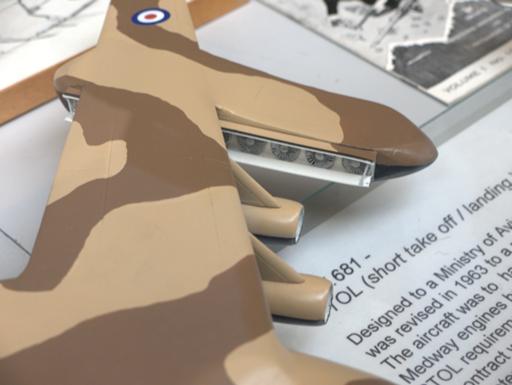
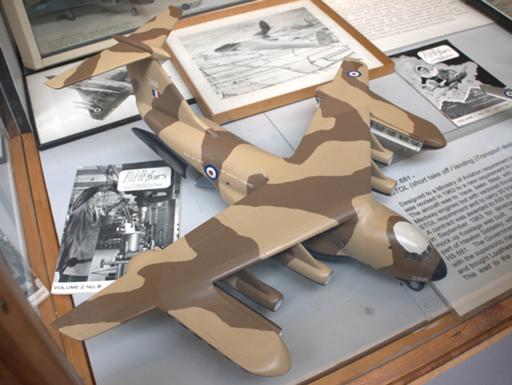
A.W.52 flying wing, presumably a wind-tunnel model.
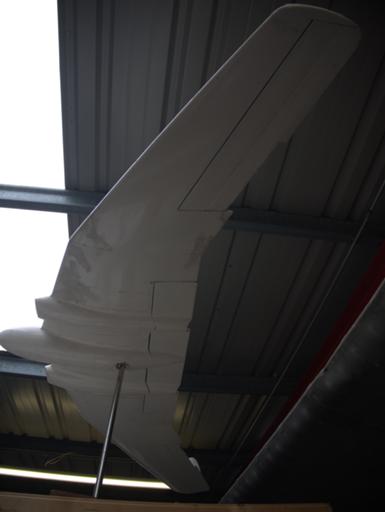
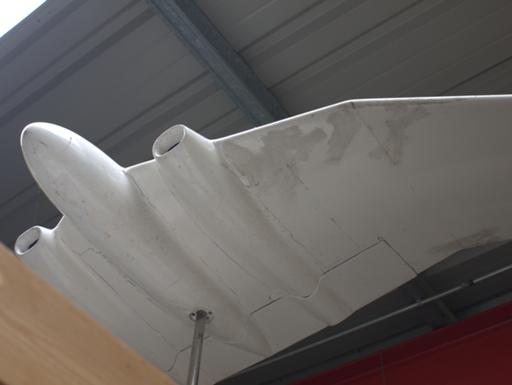
Another A.W. proposal.
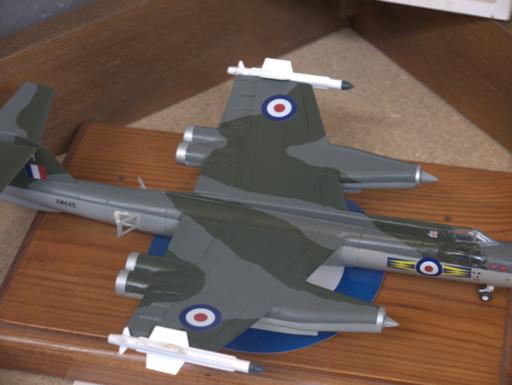
Model of Croydon Aerodrome in 1928.
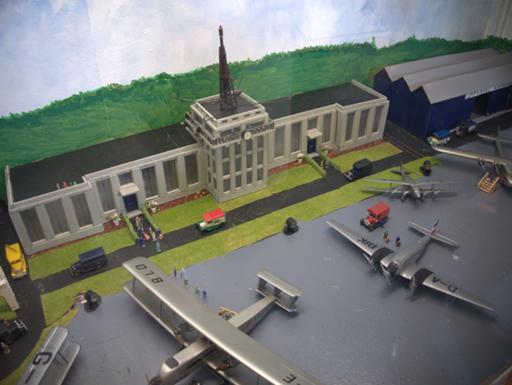
Early Humber aero engine.
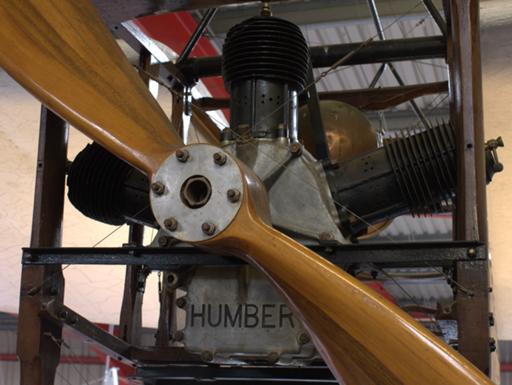
Overall, the labelling could have been better, but this museum has
some remarkably interesting things - and their policy on cockpit entry
is very welcome.
Comments on this post are now closed. If you have particular grounds for adding a late comment, comment on a more recent post quoting the URL of this one.